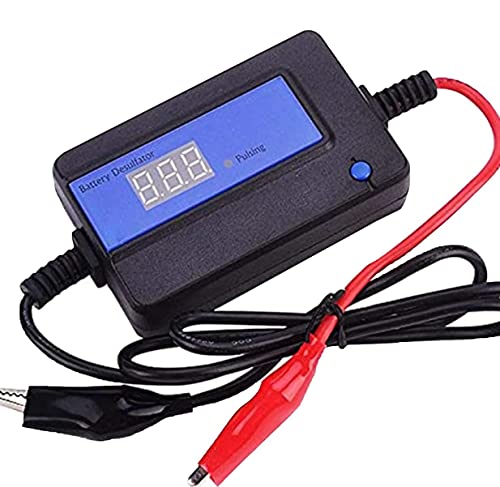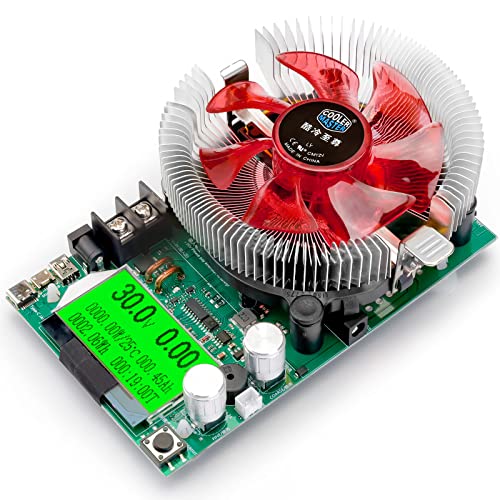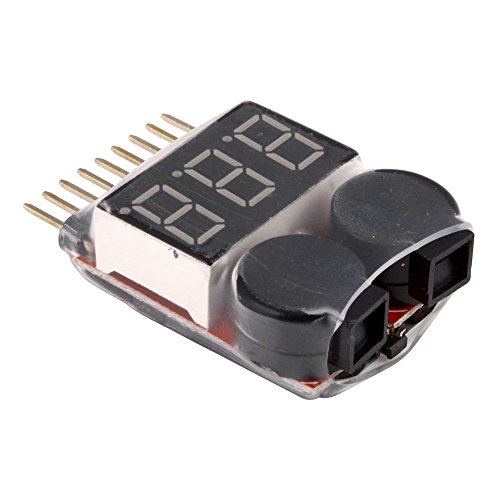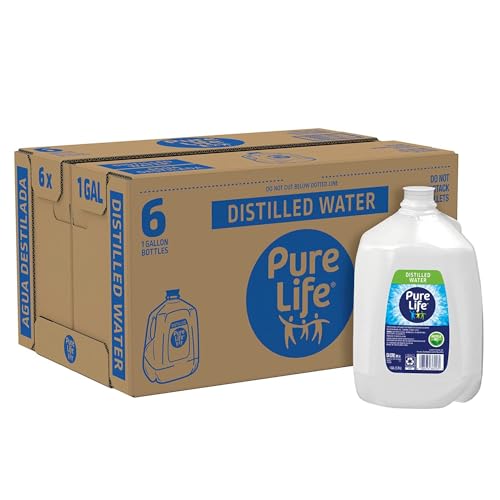In this step-by-step guide, we will educate you on how to increase the lifespan of a lead-acid solar battery. Lead-acid batteries are commonly used in solar power systems to store and provide energy when needed. The purpose of this guide is to provide you with practical tips and strategies to ensure that your lead-acid solar battery lasts as long as possible. By following our instructions, you can maximize the efficiency and longevity of your battery, ultimately saving you money and reducing your environmental footprint. So, let’s dive in and learn how to increase the lifespan of your lead-acid solar battery!
Top-rated Solar Battery Options
Understanding Lead-Acid Solar Batteries
Lead-acid solar batteries are an essential component of solar power systems. They are composed of lead plates submerged in an electrolyte solution of sulfuric acid and water. During the charging process, the lead plates are converted into lead sulfate and stored electrical energy, which can be later discharged to provide power. These batteries play a crucial role in solar power systems by storing energy generated from solar panels and ensuring a continuous power supply, especially during periods of low sunlight or at night. For instance, when the solar panels are producing surplus electricity during the day, the excess energy is stored in the lead-acid batteries for later use, such as powering a home or business at night or during cloudy weather conditions.
Proper Installation and Maintenance
Proper installation and regular maintenance are crucial for lead-acid solar batteries to ensure optimal performance and longevity. To achieve this, the following steps are essential:
- Clean and secure connections: Clean any corrosion or dirt from the battery terminals and connectors using a mixture of baking soda and water. Ensure the connections are tight and free from any loose or damaged cables.
- Check electrolyte levels: Regularly inspect the battery’s electrolyte levels, making sure they are within the recommended range. If the levels are low, add distilled water to bring them up to the appropriate level.
- Ventilation: It is essential to ensure proper ventilation for lead-acid batteries, as they can produce hydrogen gas during charging. Place the battery in a well-ventilated area with sufficient airflow to prevent the accumulation of explosive gases.
By following these guidelines, you can maintain the performance and extend the lifespan of your lead-acid solar batteries. Regularly inspect and maintain your batteries to prevent damage and maximize their efficiency.
Optimizing Charge and Discharge Cycles
To optimize charge and discharge cycles for lead-acid solar batteries, follow these best practices:
- Use appropriate charge controllers: Make sure to use charge controllers specifically designed for lead-acid batteries. This will help regulate the charging process and prevent overcharging.
- Avoid overcharging or deep discharging: Always monitor the battery voltage and avoid both overcharging and deep discharging. Overcharging can cause excessive gassing, while deep discharging can lead to sulfation and reduce battery life.
- Implement equalization cycles: Periodically perform equalization cycles to ensure balanced charging and prevent stratification. This involves briefly overcharging the battery to mix the electrolyte and eliminate any unequal distribution of charge.
By following these guidelines, you can maximize the performance and lifespan of your lead-acid solar batteries, ensuring optimal charge and discharge cycles.
Monitoring and Testing Battery Performance
Monitoring battery performance is crucial for ensuring optimal functionality and longevity. Regularly measuring voltage and specific gravity readings provides valuable insights into the battery’s state of charge and electrolyte levels. Performing capacity tests allows us to assess the overall health and capacity of the battery, identifying any potential degradation or issues. To effectively monitor battery performance, follow these steps:
- Measure voltage: Use a voltmeter to measure the battery voltage regularly. This helps us determine the state of charge and overall health of the battery. Record the voltage readings in a log for future reference and comparison.
- Check specific gravity: Using a hydrometer, measure the specific gravity of the battery’s electrolyte solution. This measurement indicates the amount of sulfuric acid present in the electrolyte, giving us valuable information about the battery’s ability to generate and store energy. Be sure to follow proper safety precautions when handling electrolyte.
- Conduct capacity tests: Periodically perform capacity tests to assess the battery’s overall health and capacity. This test involves discharging the battery at a controlled rate and measuring the amount of energy it can deliver before reaching a predetermined voltage level. Compare the test results with the battery’s rated capacity to identify any degradation or loss of capacity.
By diligently monitoring battery performance through regular voltage and specific gravity readings, as well as conducting capacity tests, we can ensure that our batteries are operating optimally and detect any potential issues early on. Regular monitoring allows us to take proactive measures, such as maintenance or replacement, to avoid unexpected failures and prolong the lifespan of our batteries.
Maintaining Proper Ambient Conditions
Maintaining proper ambient conditions is crucial for maximizing the lifespan of lead-acid batteries. Temperature control is essential as extreme temperatures can significantly affect battery performance and lifespan. It is important to ensure that batteries are kept within the recommended temperature range to avoid damage. Additionally, protecting batteries from extreme weather conditions, such as excessive heat, cold, or humidity, will help prevent premature aging and deterioration. Furthermore, it is necessary to shield the batteries from corrosive elements, such as moisture, chemicals, and gases, as exposure to these can lead to internal degradation and reduced battery capacity. By adequately controlling temperature, protecting from extreme weather, and preventing exposure to corrosive elements, the lifespan of lead-acid batteries can be greatly extended.
Implementing Safety Measures
When dealing with lead-acid batteries, it is of utmost importance to implement safety measures to protect ourselves and the environment. To ensure safety, we should:
- Wear protective gear, such as gloves and goggles, to prevent direct contact with the battery acid.
- Avoid short circuits by ensuring that the battery terminals are not in contact with any conductive materials.
- Properly dispose of old or damaged batteries at certified recycling centers to prevent environmental contamination. For example, we can take them to local battery retailers or recycling facilities that accept lead-acid batteries.
Remember, implementing these safety measures is crucial to minimize the risks associated with lead-acid batteries and to promote a safe working environment.
Replacing and Recycling Batteries
To replace a lead-acid battery, first, ensure that the power source is disconnected and the area is well-ventilated. Then, remove the cables from the old battery, starting with the negative (-) cable followed by the positive (+) cable. Next, carefully lift the battery out of its compartment and place it in a sturdy container for recycling. Remember to bring the old battery to a designated recycling center as soon as possible to prevent environmental contamination.
Seeking Professional Assistance
Seeking professional assistance is crucial when it comes to solar power and batteries. We encourage you to consult with solar power experts or battery manufacturers who can provide specific guidance and troubleshooting. Here are some steps you can take to seek professional help:
- Research reputable solar power experts or battery manufacturers in your area.
- Contact them to schedule a consultation or to inquire about their services.
- Share your specific needs and concerns with them, whether it’s about installing a solar power system or troubleshooting battery issues.
- Ask for their recommendations and advice based on your requirements.
- Take advantage of their expertise to gain an in-depth understanding of solar power systems and batteries.
- Follow any instructions or recommendations they provide to ensure optimal performance and safety.
For example, if you are experiencing issues with the performance of your solar power system, consulting with a solar power expert can help identify and troubleshoot the problem. They may suggest checking the connections, testing the panels, or adjusting the inverter settings. Similarly, if you have questions about battery maintenance, a battery manufacturer can guide you on proper care, including charging and storage techniques.
Remember, seeking professional assistance can prevent costly mistakes and ensure efficient operation of your solar power system or batteries.
Key Takeaways
In conclusion, by following the recommended steps outlined in this guide, we can greatly increase the lifespan of lead-acid solar batteries. Regular maintenance, such as checking electrolyte levels, cleaning terminals, and equalizing charging, is crucial to ensure optimum performance and longevity. Proper installation, avoiding over-discharging, and protecting batteries from extreme temperatures are also key factors in extending their lifespan. Investing the time and effort into these practices will not only benefit the environment by maximizing the efficiency of our solar power systems but will also save us money in the long run by avoiding the need for frequent battery replacements. So let’s take these steps to heart and ensure that our lead-acid solar batteries serve us well for years to come.
Necessary Equipment
Maintenance Techniques
How to Properly Use and Maintain a Lead-acid Solar Battery
- First, ensure that the lead-acid solar battery is in a well-ventilated area, as these batteries produce hydrogen gas during charging, which can be explosive in confined spaces
- Before connecting the battery to a solar panel or a charger, make sure the battery terminals are clean and free from any corrosion. Use a wire brush or sandpaper if needed
- To charge the battery, connect the positive (+) terminal of the battery to the positive (+) terminal of the solar panel or charger. Similarly, connect the negative (-) terminals together. Ensure the connections are secure and properly tightened
- Choose an appropriate charge controller, which helps regulate the charging process and prevents overcharging or deep discharge of the battery. Connect the charge controller between the solar panel or charger and the battery
- It is important to monitor the battery’s voltage regularly. A fully charged lead-acid solar battery typically has a voltage between 12.6 to 12.8 volts, while a discharged battery would have a voltage below 11 volts. If the voltage drops too low, the battery may get damaged, so it’s essential to recharge it in a timely manner
- As a beginner, it is crucial to familiarize yourself with the safety instructions provided by the battery manufacturer. This includes handling and disposing of the battery correctly and being aware of potential dangers associated with this type of battery



















